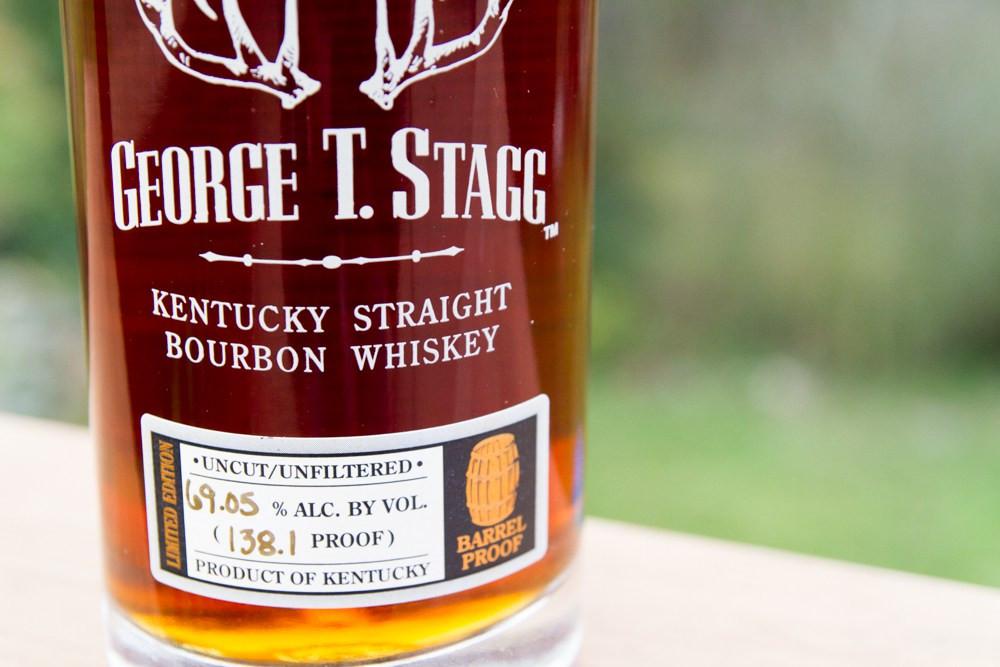Bourbon nerds (like us) want to be sure which year they are buying, just like vintage wine. Below is the quick cheat sheet you can use to make sure the bottle of George T Stagg you are buying is the correct release year - courtesy of one of our customers, no less!.
Each year of the Stagg release is a different proof as they are all barrel proof which undergoes different evaporation rates as they age. Below are the most recent releases and proofs:
| Year | Proof | Age |
|---|---|---|
| 2002 | 137.6 | 15 yr |
| 2003 | 142.7 | 15 yr |
| 2004 | 129 | 15 yr |
| 2005 Spring Lot A: Kentucky only | 130.9 | 15 yr |
| 2005 Spring Lot B: Nationwide | 131.8 | 15 yr |
| 2005 Fall | 141.2 | 15 yr |
| 2006 | 140.6 | 15 yr |
| 2007 | 144.8 | 15 yr |
| 2008 | 141.8 | 15 yr |
| 2009 | 141.4 | 16 yr |
| 2010 | 143.0 | 17 yr |
| 2011 | 142.6 | 18 yr |
| 2012 | 142.8 | 17 yr |
| 2013 | 128.2 | 16 yr |
| 2014 | 138.1 | 16 yr |
| 2015 | 138.2 | 15 yr |
| 2016 | 144.1 | 15 yr |
| 2017 | 129.2 | 15 yr |
| 2018 | 124.9 | 15 yr |
| 2019 | 116.9 | 15 yr |
| 2020 | 130.4 | 15 yr |
| 2022 | 138.7 | 15 yr |
Also be sure to check out our BTAC William Larue Weller Release Year "Cheat Sheet" and BTAC Thomas H Handy Release Year "Cheat Sheet" articles!
If you are wondering why there are not similar tables dedicated to the BTAC Eagle Rare 17 or Sazerac 18 releases, the answer is pretty simple.
The Eagle Rare 17 was introduced in 2000 and has been released every year since. It was bottled at 90 proof until 2018, when it was changed to 101 proof going forward. As the name implies, the age is always 17 years.
The Sazerac 18 is always 18 years and always is bottled at 90 proof.
Cheers!

